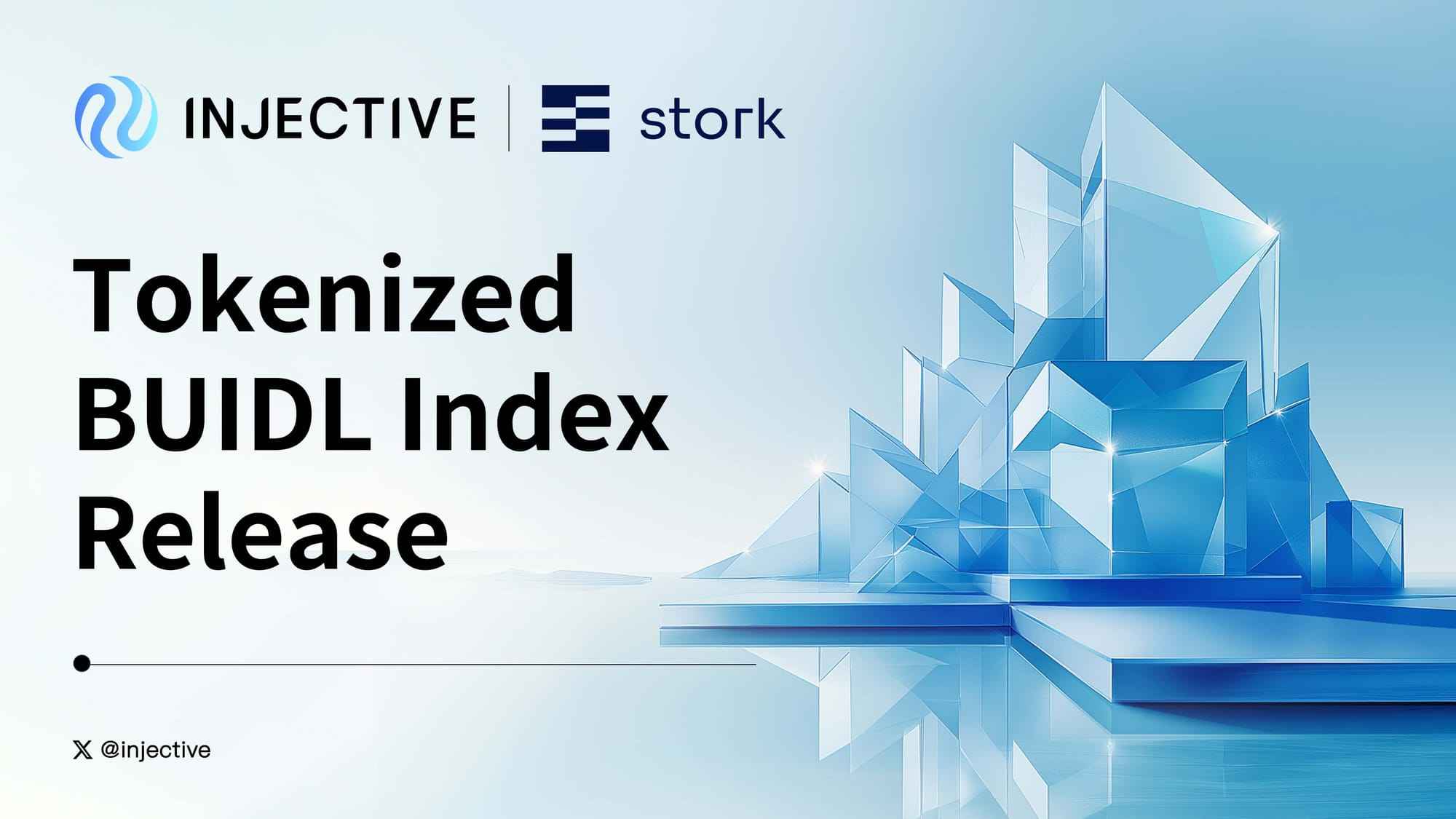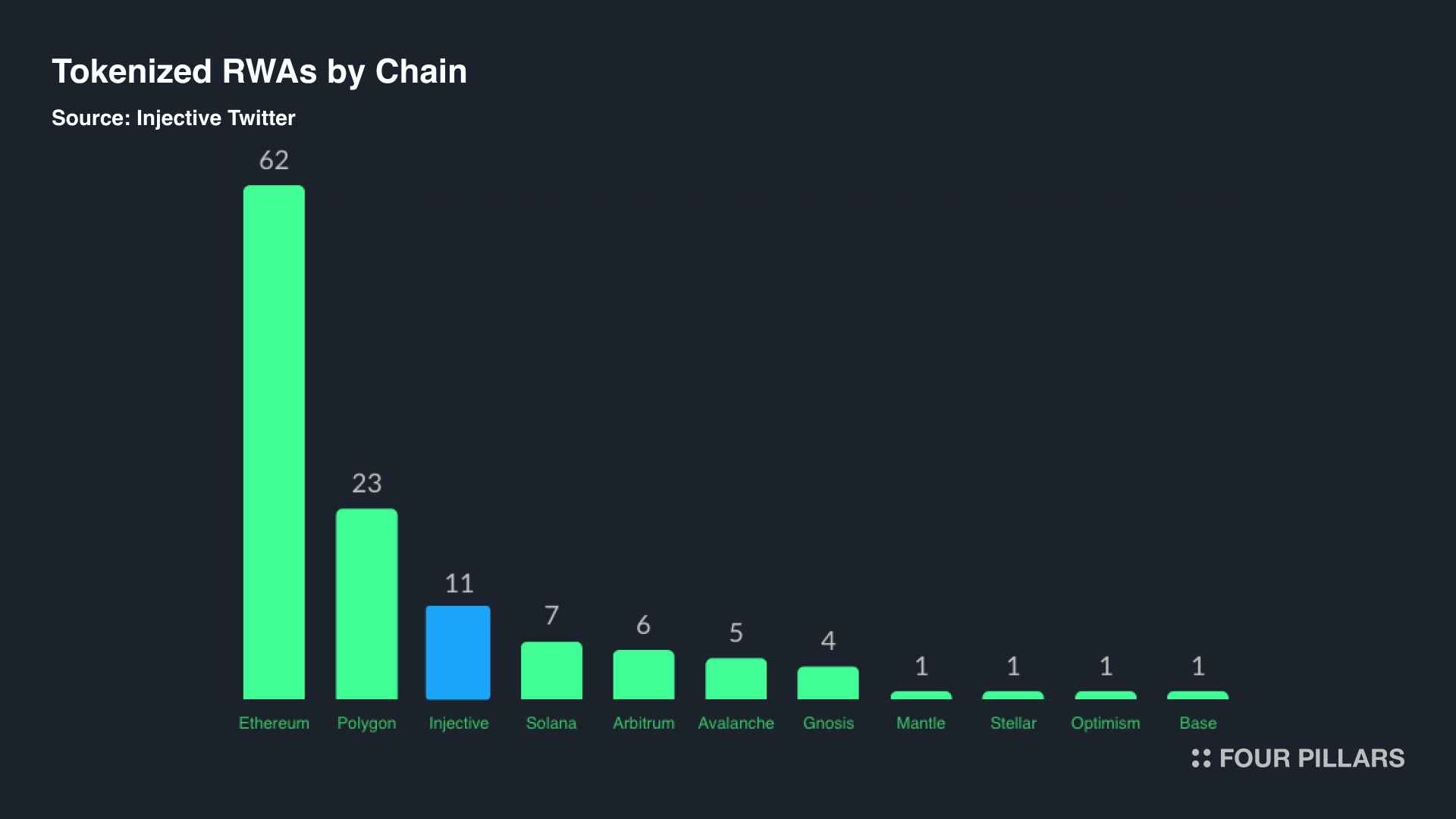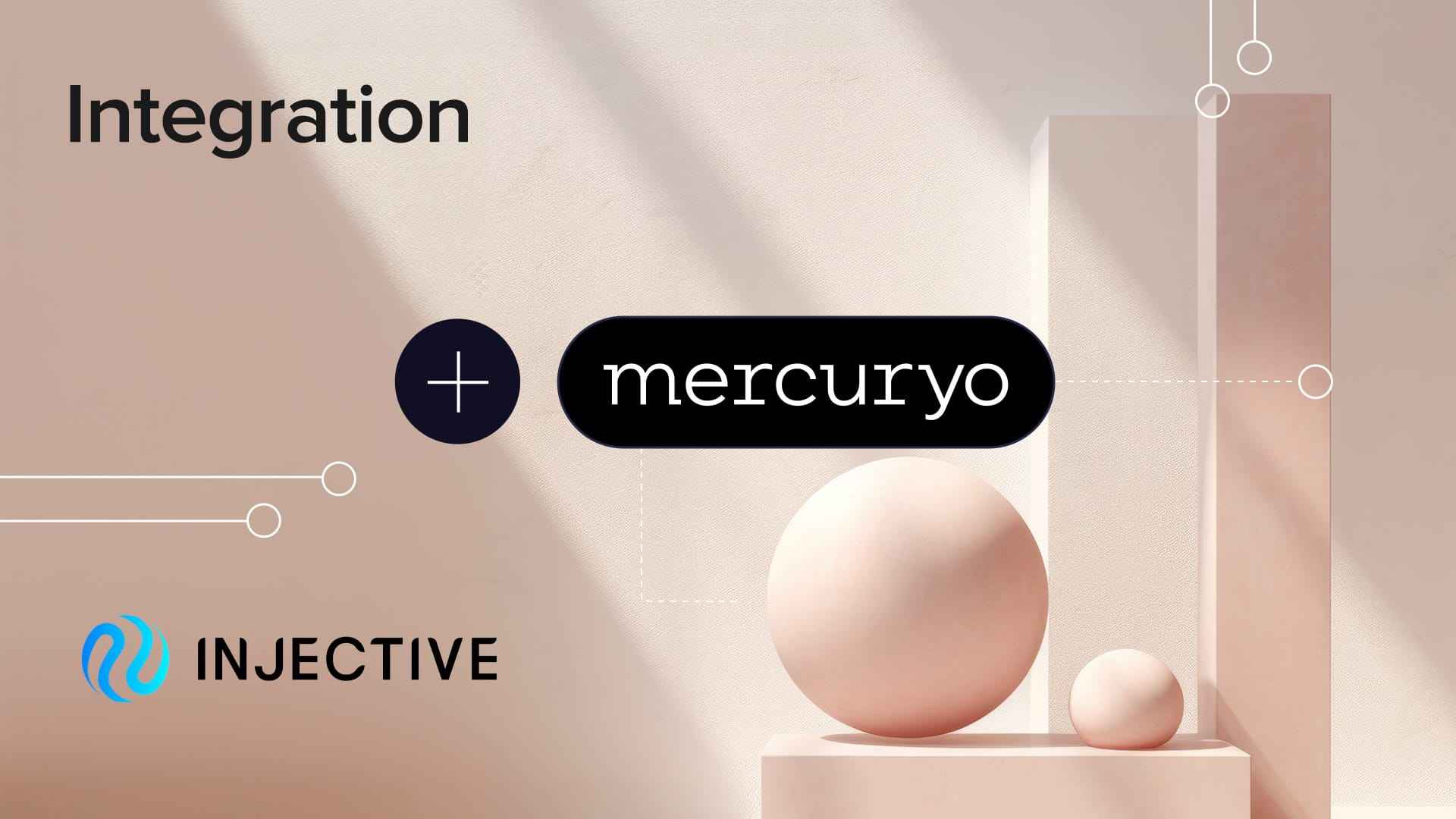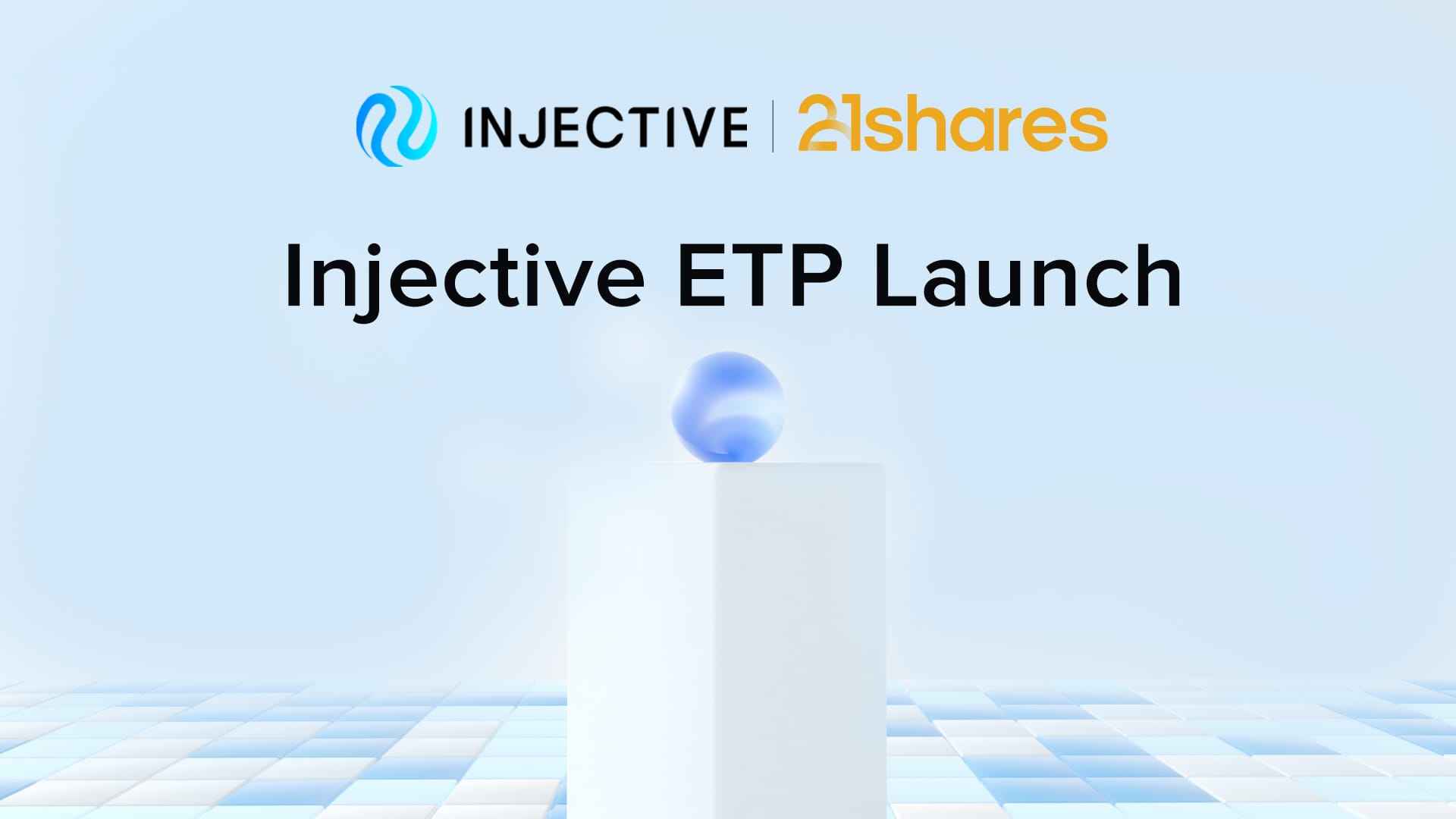Recently, I wrote an article titled "Is the Era of Purpose-Built Blockchains Coming?" discussing the necessity and significance of Purpose-Built blockchains. For those who haven't read it, a Purpose-Built blockchain can be described as a blockchain infrastructure optimized for specific real-world use cases or sectors. While I maintain a very positive view of general-purpose blockchains, I believe that as the blockchain market grows, sophisticated applications will require customized infrastructure environments. Thus, I wrote the article, believing it's time to focus on Purpose-Built blockchains.
In this context, I'd like to discuss the design methodology of Purpose-Built blockchains, focusing on a case that has long optimized its infrastructure for a specific sector and use case. This case is Injective.
Injective has been building its blockchain network with the goal of being a "Blockchain Built for Finance" for a considerable period. This isn't merely a slogan; they've actually modified the Cosmos SDK to increase transaction processing speed and reduce fees. Furthermore, they've developed an Exchange Module that provides integrated liquidity and an RWA (Real World Assets) module that helps institutions easily create RWAs, thereby proving their identity as a Finance-Specialized Blockchain.
However, we are well aware that infrastructure development alone cannot serve as an exemplary case of a "purpose-driven blockchain." This is because a truly purpose-driven blockchain requires not just infrastructure, but also real-world applications that utilize this infrastructure. For this reason, this article aims to closely examine Injective's finance-specialized infrastructure and the specific use cases implemented through it during this summer. Furthermore, we will discuss how purpose-driven blockchains can develop their ecosystems in the future.
1.1.2 BUIDL Index

The next case is Injective's recently introduced tokenized index for BlackRock's BUIDL fund. This index is the first perpetual futures market tracking the supply of the BlackRock BUIDL fund, with a notable feature being that it tracks the fund's token supply rather than its price. This approach directly reflects changes in the fund's actual size.
Users can invest in assets tracking the BUIDL fund in real-time through a RWA-specialized oracle created by Injective and Stork, with the freedom to take long or short positions based on market outlook. Leveraged options are also available, providing 24/7 access to tokenized assets like U.S. Treasuries.
The index operates based on the fund's average price (Mark Price), which fluctuates intraday according to supply changes, using a 1-hour time-weighted average price (TWAP) to mitigate short-term volatility. Injective's RWA module plays a crucial role here, particularly the RWA-dedicated oracle introduced in the Altaris mainnet upgrade, providing accurate and tamper-proof data feeds for tokenized assets.
The most significant change resulting from the RWA module's introduction is the dramatically lowered entry barrier for BUIDL investments. Compared to the previous minimum investment of $5 million for the BUIDL fund, now anyone can invest in the BUIDL index perpetual futures market with as little as $1.
1.1.3 USDY and USDM Integration
USDY is a tokenized bond backed by short-term U.S. Treasuries and bank demand deposits, combining the stability of USD-based assets with yield generation. USDM is the first permissionless yield-bearing stablecoin backed by U.S. Treasuries, offering a 5% annual yield at launch. This integration was made possible by Injective's RWA module, which allows institutions and users to launch new tokenized products with customized rules and parameters.
1.1.4 3rd in Tokenized RWAs by Chain

These RWA module use cases have positioned Injective as the third-ranked chain in terms of tokenized RWAs, behind only Ethereum and Polygon. However, unlike Injective, these chains don't provide specialized financial infrastructure, suggesting potential for Injective's further growth in this sector.
1.2.1 2024 Election Perp Market

While Injective's RWA module has recently gained attention, the Exchange Module is actually the most actively utilized. Helix, the largest decentralized exchange within the Injective ecosystem, is a prime example of leveraging this module. Recently, Helix launched a perpetual options market related to the 2024 U.S. presidential election, using Polymarket's election betting market as the underlying asset rather than traditional cryptocurrency assets.
Key features of this product include:
No expiration date
Settlement in USDT
Users can take long (buy) or short (sell) positions on the election outcome with up to 3x leverage
The pricing mechanism uses a dedicated oracle feed provided by Stork, applying a 6-hour time-weighted average price (TWAP) of Polymarket's mid-price. This approach aims to prevent sudden price fluctuations and ensure stability.
After the election concludes, the market can be settled through a governance proposal, with any unsettled positions forcibly liquidated at the oracle's final price. Notably, for the 2024ELECTION PERP, TRUMPWIN is set as the underlying asset, structured to settle at $1 if Donald Trump wins and $0 if he loses.
This initiative demonstrates the potential for more diverse financial products linked to real-world events in the DeFi ecosystem. It exemplifies Injective's sensitivity to trends and showcases how the exchange module can be used to create innovative financial products.
1.3.1 Fiat On-ramp Addition with Mercuryo

Beyond the direct use cases of the modules, various infrastructures are being implemented on Injective. A notable example is the establishment of an on-ramp (Fiat to Crypto) infrastructure through collaboration with Mercuryo. Mercuryo is a leader in payment solutions for Web3 applications, and this integration now allows direct purchase of INJ tokens on the Injective Bridge.
Users can buy INJ through various payment methods including Visa, Mastercard, Apple Pay, Google Pay, and bank transfers. The system supports over 25 fiat currencies, including USD, EUR, JPY, GBP, CAD, CHF, and KRW. This significantly reduces the complexity of the cryptocurrency onboarding process and represents an important achievement in bridging traditional finance and the blockchain world.
As a result, accessibility to the Injective ecosystem has greatly improved, providing both new and existing users with a simplified on-ramp experience. This development streamlines the entry process into the Injective ecosystem, making it more user-friendly and accessible to a wider audience.
1.3.2 INJ ETP

Let's first discuss the INJ ETP product. As briefly mentioned earlier, Injective added an RWA (Real-World Asset) module through the Volan update in January this year, creating conditions for institutions to easily develop "permissioned products" on Injective. This attempt is a first for a public blockchain.
In fact, since then, Injective has been developing customized infrastructure solutions for traditional financial institutions, allowing them to easily adopt blockchain technology while maintaining the decentralized nature of public blockchains. These efforts now seem to be reflected in the ETP product.
ETP stands for Exchange Traded Products, also known as 'listed index products' in Korean. Simply put, it refers to products listed on exchanges that track the value changes of underlying assets.
Recently, Injective Network garnered significant attention with the launch of AINJ, an ETP created by the management company 21Shares, using Injective's token INJ as the underlying asset. Interestingly, investors can also earn staking rewards through AINJ, essentially capturing the full upside of Injective. The unique feature is that as an ETP, it can be traded on stock markets as well.
As I mentioned earlier, Injective's slogan "Blockchain Built for Finance" is not merely a narrative. They have actively utilized Plug-and-Play modules to 1) provide integrated liquidity to DeFi protocols and 2) build infrastructure enabling institutions to easily tokenize RWAs on public blockchains. Of course, fast speed and low transaction fees also play a crucial role.
However, having such infrastructure alone doesn't make for an excellent Purpose-Built blockchain. Real-world use cases leveraging this infrastructure are necessary. Injective seems well aware of this, as they're actively creating practical examples utilizing their own infrastructure.
This is why I consider Injective to be the most exemplary case of a Purpose-Built blockchain. Going forward, Purpose-Built blockchains must not only build infrastructure suited to their purpose but also introduce cases that best utilize this infrastructure. I believe this is essential for establishing a chain's distinct identity.
The blockchain industry has now entered a state of "abundant block space". Various infrastructure projects are providing builders with extensive block space. As a result, players offering customized block space will attract market attention. This is why I'm interested in Purpose-Built blockchains and why I'm closely watching Injective.
https://blog.injective.com/en/the-july-monthly-community-update/
https://blog.injective.com/en/mercuryo-brings-fiat-on-ramp-to-injective/
https://4pillars.io/en/articles/era-of-purpose-built-blockchain
https://blog.injective.com/en/the-august-monthly-community-update/
https://blog.injective.com/en/the-september-monthly-community-update/
Dive into 'Narratives' that will be important in the next year